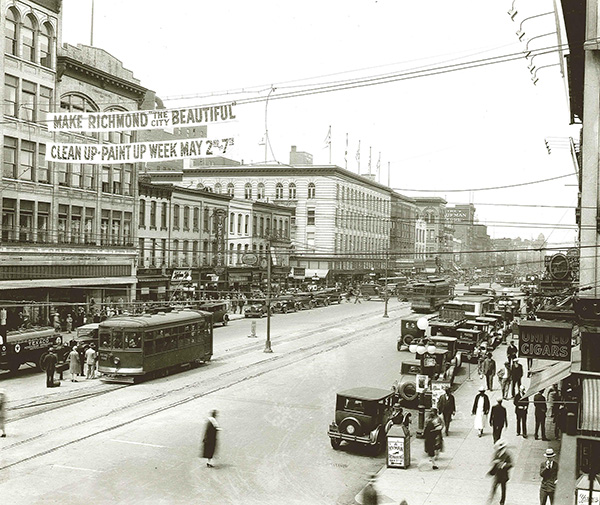
The Greater Richmond Transit Company was created on April 12, 1973, when the City of Richmond purchased the assets of the Virginia Transit Company to establish a publicly owned public transit provider for the Richmond region.
The history of transit in the Richmond region, however, dates as far back as 1860, when the Richmond Railway was originally organized, and includes major historical events, most notably the 1887 granting of a franchise to the Richmond Union Passenger Railway Company to operate the world’s first publicly owned electric streetcar system.
The Richmond region has had public transit for more than 160 years, making it one of the oldest continually operating transit companies in the United States.
Timeline
1860
The Richmond Railway was formed, offering horse drawn trolley service in addition to railroad access to the city
1887
The Richmond Union Passenger Railway Company began operating electric streetcars
1949
Gas buses replaced electric streetcars
1953
Gas buses were replaced by diesel
1957
The “Frosty Fleet” was introduced, bringing air conditioning to Richmond’s public transit.
1973
The transit agency was purchased from private owners and incorporated as GRTC Transit System to provide regional transit
1975
Service began to Henrico County
1989
Chesterfield County completed the purchase of half ownership of GRTC, joining the City of Richmond in a 50/50 ownership split
1995
The transit system adopted a new purple and black color scheme, which would later become purple, green, and white
2000s
GRTC made major changes to prepare the region for 21st-century transit service, adding real-time bus tracking, online trip planning, and building a new facility on Belt Blvd, which began full operations in 2010.
2012
GRTC added its first Compressed Natural Gas (CNG) vehicle to the paratransit fleet
2013
The first Compressed Natural Gas (CNG) buses went into operation
2014
The region completed the Broad Street Rapid Transit Study and received notice of approval for a federal TIGER Grant, providing key funding and plans for what would become the GRTC Pulse Bus Rapid Transit system. Design and construction would last another four years.The first Compressed Natural Gas (CNG) buses went into operation
2018
In preparation for the opening of the Pulse, GRTC conducted a major overhaul of all service, culminating in the new GRTC bus and Pulse system launching in 2018 to great success: ridership would increase by 17 percent in the first full year of service
2020
Longtime GRTC co-owners Chesterfield County received their first fixed route bus line with the introduction of the Route 111 (now 3B) along the Richmond Highway
2023
In GRTC’s 50th year, the agency introduced several new routes, services, and major infrastructure pieces. This began with the opening of a new temporary off-street Downtown Transfer Station, with real-time information screens, WIFI, charging, and other amenities. The agency then introduced LINK Microtransit, a new zone based on demand transit service that began operating first in Azalea
2024
A second fixed route bus line was extended into Chesterfield County with a major expansion along the 1A, and four more mictrotransit service zones were added
2025
Three-door, 60-foot articulated buses were added to the Pulse fleet to meet increased ridership needs—built for more riders and faster boarding. GRTC also launched the Transit Access Partnership, a collaborative effort focused on keeping transit zero fare and accessible for all

